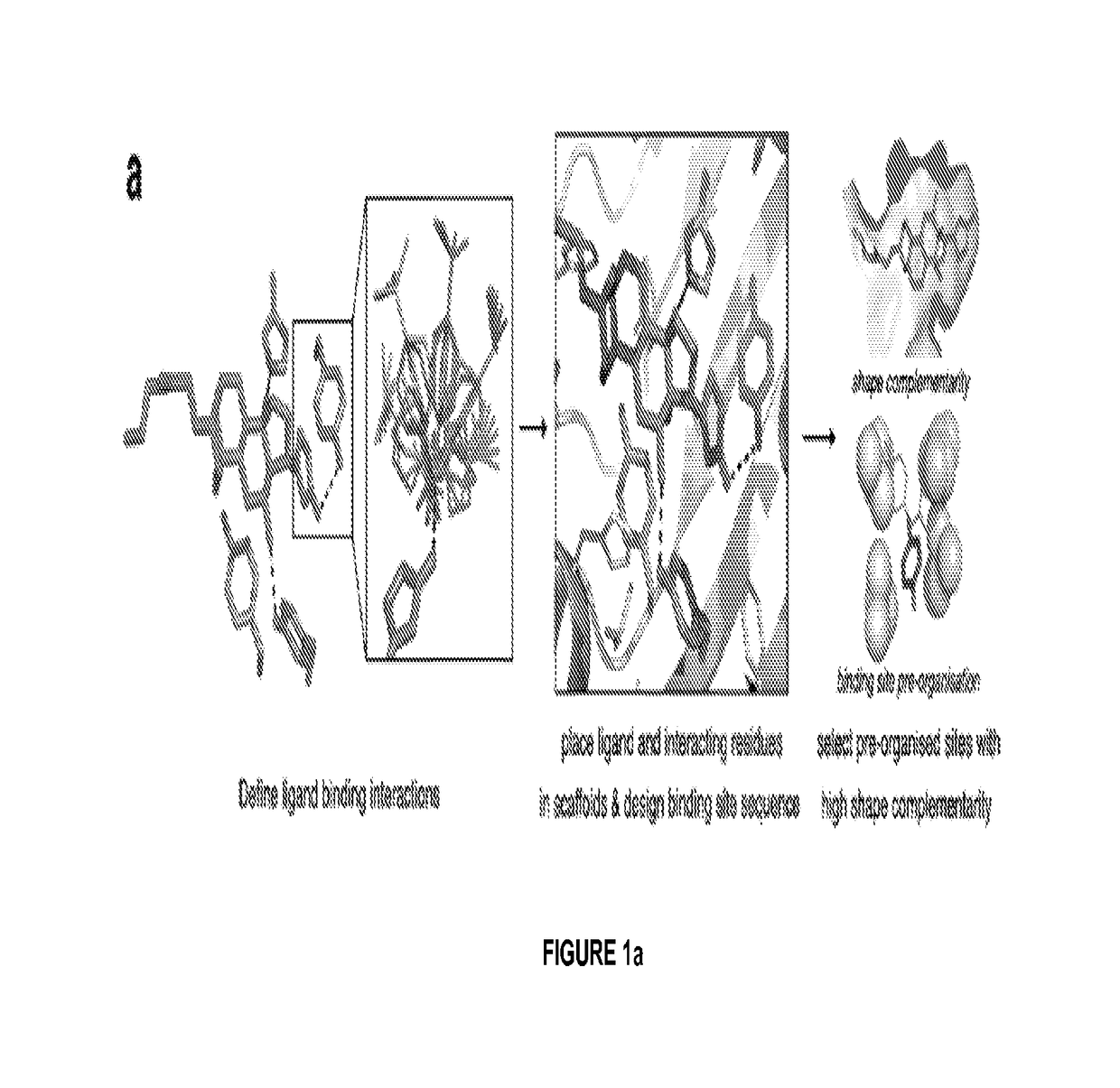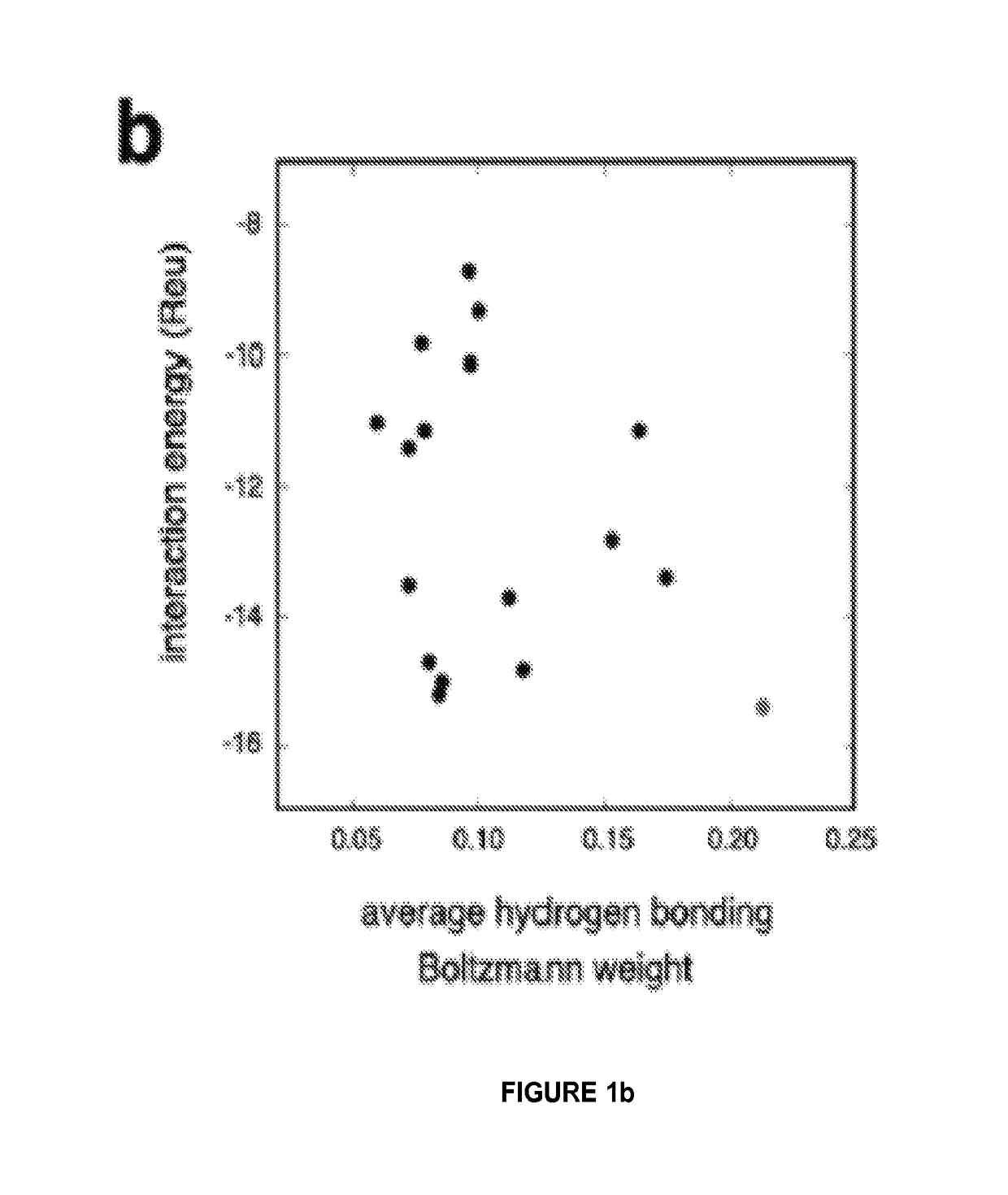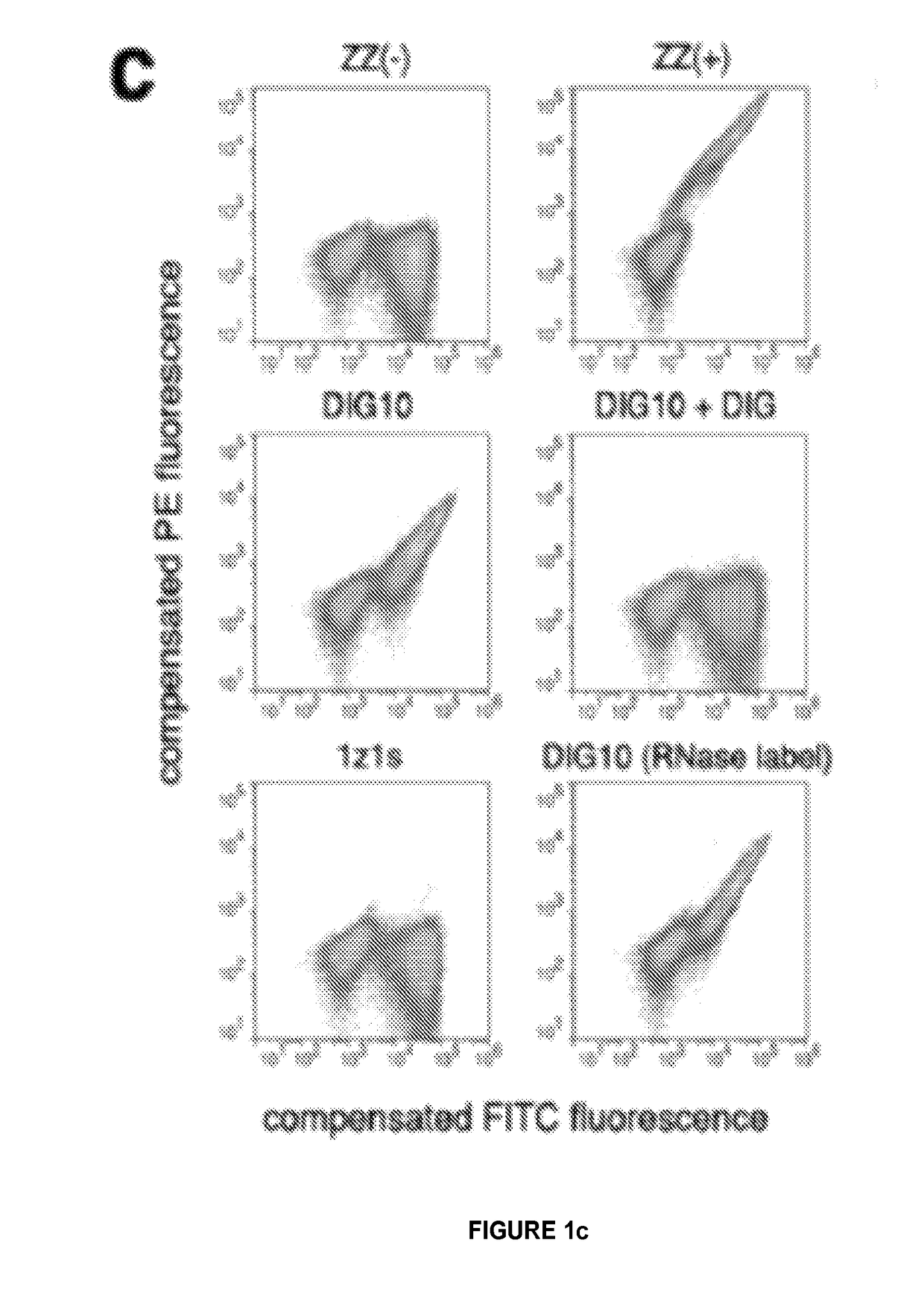High affinity digoxigenin binding proteins
a digoxigenin and high affinity technology, applied in the field of high affinity digoxigenin binding proteins, can solve the problems of “unsolved problem” of computational design of precise molecular recognition between proteins and small molecules, and the success of attempts to design ligand binding proteins
- Summary
- Abstract
- Description
- Claims
- Application Information
AI Technical Summary
Benefits of technology
Problems solved by technology
Method used
Image
Examples
example 1
[0123]We developed a computational method for designing ligand binding proteins with three properties characteristic of naturally occurring binding sites: (1) specific energetically favorable hydrogen bonding and van der Waals interactions with the ligand. (2) high overall shape complementarity to the ligand, and (3) structural pre-organization in the unbound protein state, which minimizes entropy loss upon ligand binding15,16. To program in specific interactions with the small molecule, disembodied binding sites are created by positioning amino acid side chains around the ligand in orientations optimal for hydrogen bonding and other energetically favorable interactions and then placed at geometrically compatible binding sites in a set of scaffold protein structures. The surrounding side chain identities and conformations are then optimized to generate additional protein-ligand interactions and buttressing protein-protein interactions (FIG. 1a). Designs with protein-small molecule s...
PUM
| Property | Measurement | Unit |
|---|---|---|
| temperatures | aaaaa | aaaaa |
| temperatures | aaaaa | aaaaa |
| temperatures | aaaaa | aaaaa |
Abstract
Description
Claims
Application Information
 Login to View More
Login to View More - R&D
- Intellectual Property
- Life Sciences
- Materials
- Tech Scout
- Unparalleled Data Quality
- Higher Quality Content
- 60% Fewer Hallucinations
Browse by: Latest US Patents, China's latest patents, Technical Efficacy Thesaurus, Application Domain, Technology Topic, Popular Technical Reports.
© 2025 PatSnap. All rights reserved.Legal|Privacy policy|Modern Slavery Act Transparency Statement|Sitemap|About US| Contact US: help@patsnap.com



